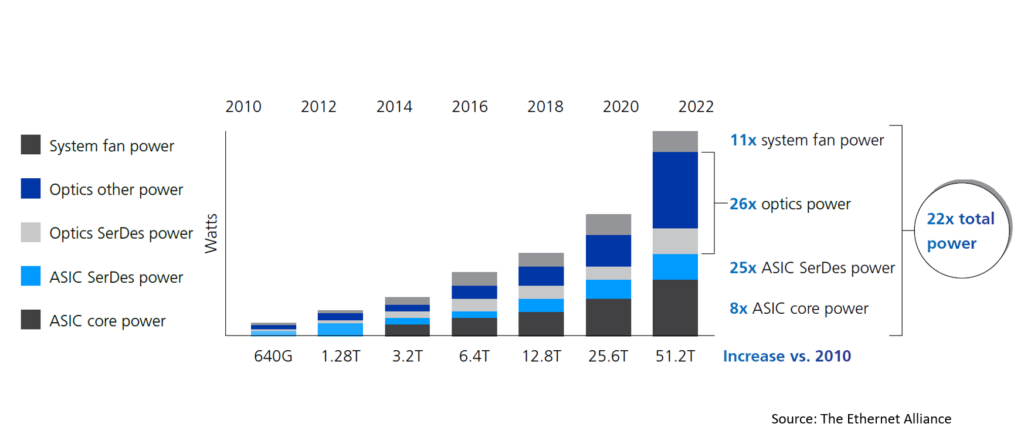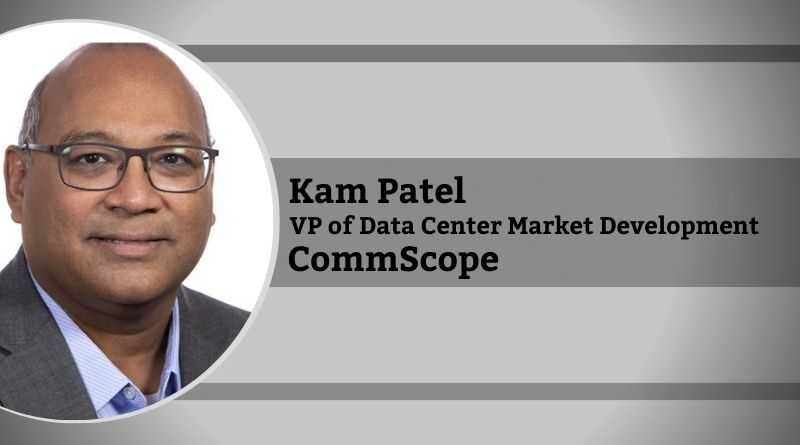Cable Plant Matters in the Rapidly Changing Data Center Landscape
By Kam Patel, Vice President of Data Center Market Development, CommScope
The volume of digital traffic pouring into data centers continues to climb; meanwhile, emerging technologies like quantum computing, AI, and machine-to-machine communications are pushing latency requirements into the single-millisecond range and generating power-hungry workloads. These and other trends are converging in the data center’s infrastructure—forcing network managers to rethink how to stay ahead of the changes while improving efficiency.
Whether it’s interconnecting multiple hyperscale facilities, upgrading switches and servers, or bringing processing power closer to the edge, the ability of the physical layer infrastructure to adapt and reliably support evolving latency and bandwidth requirements is key to keeping pace with the ever-increasing rate of change and sustainability initiatives.
New Trends Bring New Challenges
Optical signaling technology has advanced to lane rates of 56 and 112 Gb/s, which supports next-generation 400G and 800G applications and paves the way for future 1.6 and 3.2T. 400G switch and 100G server connections have already reached the mainstream in the hyperscale environment, and many are ramping up to 800G switch and 200G server connections. Multi-tenant data centers aren’t far behind, and enterprise data centers are starting to adopt 400G switch connections and upgrade server speeds to 25G and 50G.
Switch capacity, port density, and fiber counts are also rising. It’s now common to see long-distance data center interconnects (DCIs) between two hyperscale facilities comprised of cables with upwards of 6,000 fibers and higher-capacity 25.6T and even 51.2T switches. At the same time, MSAs and consortiums are busy working on 1.6T and 3.2T pluggable transceiver specifications and addressing power consumption with new technologies like co-packaged optics and silicon photonics.
With the ability to support multiple 50G, 100G, or 200G connections per port, new higher-capacity switches also allow data centers to optimize port utilization, reduce cost, and improve efficiency as they upgrade leaf-spine fabrics and low-latency server breakouts at the edge. A 25.6T switch ASIC with 512 X 56 Gb/s SerDes can support 64 400G connections, 128 200G connections, 256 100G connections, 512 50G connections, or a combination thereof. A 25.6T switch ASIC with 256 X 112 Gb/s SerDes can support 32 800G, 64 400G, 128 200G, or 256 100G connections.
Data centers should also look to cable providers with a customer-focused approach, agile supply chain, and commitment to sustainability and corporate responsibility.
As data centers adopt these trends to handle more traffic and support emerging technologies, they must accommodate diverse applications and latency and bandwidth requirements when and where required. They also face the challenge of higher fiber-count cabling taking up valuable space in pathways and high-capacity switches, significantly increasing density, congestion, and complexity within racks. As shown below, higher-capacity switches also consume more energy, which is a significant concern among data centers as they strive to accelerate sustainability initiatives and achieve ESG goals.

The Physical Layer Plays a Role
The physical layer infrastructure is increasingly significant in enabling data centers to effectively adapt to diverse and evolving applications, configurations, and high-density connection scenarios. Next-generation 400G and 800G are supported via multimode and singlemode parallel optics technology using multi-fiber connectivity (i.e., MPO). These applications are also supported over longer distances of duplex singlemode via wave division multiplexing (WDM) technology that can run multiple data streams on different wavelengths. Data centers must ensure the cable plant will support their applications, distances, configurations, and upgrade plans.
For example, high-fiber count 16-fiber MPO backbone trunk cables between switches can remain fixed, supporting 400G or 800G speeds and future 1.6T speeds. Additionally, new very small form factor (VSFF) MPO and duplex connectors can help data centers support increased port densities within racks. VSFF duplex connectors, such as the SN and MDC, are more than 70% smaller than traditional LC duplex connectors. In addition to duplex applications, these connectors can be ganged to support multi-fiber applications, giving data centers the flexibility to support various switch fabric and low-latency server breakout configurations that optimize port utilization and improve efficiency while saving valuable rack space.
For DCI connections, innovative technologies like rollable ribbon fiber cable and smaller 200-micron fiber coating enable flexible, reduced-diameter high-count fiber cables that use a gel-free design to reduce splicing and labor costs. Smaller, high-density cabling and connectivity solutions that save space and are comprised of less material also contribute to sustainability initiatives. Concurrently, cable management becomes increasingly crucial to ensuring reliability and efficiency in high-density environments.
The Right Cable Provider Can Help
Partnering with the right cable provider is as essential as having the right cable plant. As MSAs increase in number and continue to advance technology, and new standards are developed, more approaches to transporting data and connecting switches and servers will become available.
The right cable provider won’t just provide the latest solutions to support the dizzying array of options. They will also have the industry leadership and expertise to help data centers of all types and sizes design and deploy underlying foundations with the reliability, flexibility, and scalability to keep pace with the rate of change.
Data centers should also look to cable providers with a customer-focused approach, agile supply chain, and commitment to sustainability and corporate responsibility. This will help ensure investment in the physical layer infrastructure takes a holistic approach that strikes a balance of quickly and effectively adapting to change and aligning with business and sustainability objectives.
Kam Patel is Vice President of Data Center Market Development. He has been with CommScope for more than 30 years in a variety of Business Development, Engineering, Marketing, Operations, Product Management and Strategy roles and has authored numerous articles, white papers, and presentations on the design of telecommunications and data networks. Kam has a Bachelor of Science Degree in Electrical Engineering from the University of Vermont and holds more than 20 patents for network equipment.

